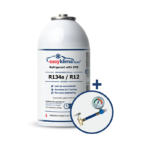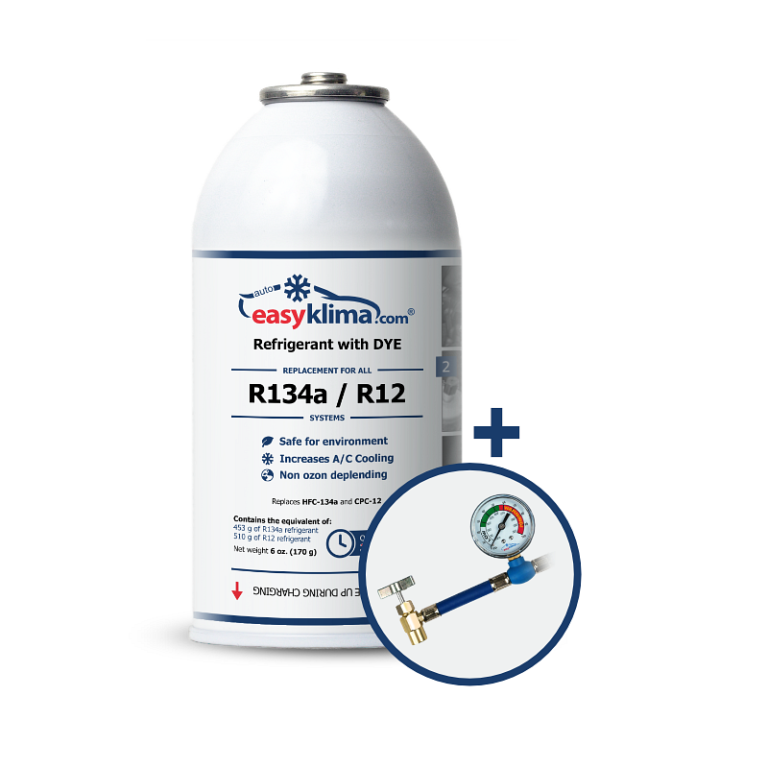When it comes to getting a tattoo, the pain factor is often a major concern for many individuals. However, advancements in technology and tattooing techniques have paved the way for pain-free tattoo experiences. Imagine a world where you can get inked without enduring excruciating pain. This article aims to explore the realm of pain-free tattoos and uncover the locations on the body where the tattooing process is least painful. The key to pain-free tattoos lies in understanding the human body’s pain perception and the physiological factors that contribute to discomfort during tattooing.
The sensation of pain is primarily transmitted by nerve fibers, which are responsible for relaying signals to the brain. By strategically selecting body areas with fewer nerve endings or employing specialized techniques, tattoo artists can minimize pain during the tattooing process. One of the least painful areas to get a tattoo is the outer upper arm. This region has a relatively thick layer of skin and a reduced concentration of nerve endings, making it an ideal canvas for pain-free tattoos. The outer upper arm also provides ample space for intricate designs, allowing artists to work with precision and finesse. Another area known for its pain tolerance is the upper back. The skin on the upper back is thick and contains fewer nerve endings compared to more sensitive regions, such as the ribcage or collarbone. This makes it an attractive option for individuals seeking pain-free tattoo experiences.
Additionally, the broad surface area of the upper back allows for larger tattoos, offering limitless creative possibilities. For those who prefer pain-free tattoos on a smaller scale, the forearm presents itself as a prime candidate. With its abundance of muscle and relatively fewer nerve endings, the forearm offers a favorable location for painless tattooing. Whether it’s a discreet symbol or an intricate design, the forearm serves as a versatile canvas for pain-free self-expression. When considering pain-free tattoo options, it’s essential to acknowledge the diversity of pain thresholds among individuals. What may be painless for one person could be slightly uncomfortable for another. Therefore, effective communication with your tattoo artist becomes crucial in tailoring the experience to your specific needs and preferences. In recent years, technological advancements have also contributed to pain reduction in the tattooing process. Some tattoo studios now utilize numbing creams or local anesthetics to minimize discomfort during the procedure. These substances work by temporarily desensitizing the skin and numbing the nerve endings, ensuring a pain-free tattoo experience. Moreover, the development of innovative tattooing devices has played a significant role in minimizing pain.
Modern tattoo machines are designed to operate with precision and minimal vibration, reducing discomfort and creating a more enjoyable experience for clients. These devices, coupled with the skillful techniques of experienced tattoo artists, contribute to pain-free tattoos that surpass traditional expectations. In conclusion, pain-free tattoos are no longer a mere fantasy but a tangible reality. By considering areas of the body with fewer nerve endings and utilizing advanced techniques and technology, individuals can now embark on a pain-free journey of self-expression through tattoos. Whether it’s the outer upper arm, upper back, or forearm, these locations offer a canvas where the tattooing process is significantly less uncomfortable. Embrace the evolution of tattooing and discover the joy of pain-free tattoos in the body areas that won’t hurt.
Does numbing cream really work for painless tattoos?
Tattoos have been a popular form of body art for centuries, allowing individuals to express their creativity and personal style. However, the pain associated with getting a tattoo has always been a concern for many people. In recent years, the use of numbing creams has gained popularity as a potential solution to make the tattooing process more comfortable and painless. But the question remains: does numbing cream really work for painless tattoos?
Numbing creams, also known as topical anesthetics, are specifically formulated to reduce or eliminate pain and discomfort during various medical and cosmetic procedures, including tattooing. These creams typically contain active ingredients such as lidocaine, benzocaine, or tetracaine, which work by blocking the transmission of pain signals from the nerves to the brain. When applied to the skin before a tattoo session, numbing creams penetrate the epidermis and reach the underlying nerves. The active ingredients in the cream bind to the nerve endings, temporarily inhibiting their ability to send pain signals. As a result, the sensation of pain is significantly reduced, if not completely eliminated, allowing the individual to undergo the tattooing process with minimal discomfort. It is important to note that the effectiveness of numbing creams for painless tattoos can vary depending on several factors.
Firstly, the concentration and type of active ingredients in the cream play a crucial role in determining its efficacy. Higher concentrations of anesthetics generally provide better pain relief. However, it is essential to follow the instructions provided by the manufacturer and not exceed the recommended dosage, as excessive application can lead to adverse effects. Furthermore, the duration of the numbing effect is another consideration. Numbing creams typically take some time to take effect, usually around 20 to 30 minutes after application. The duration of pain relief can vary, ranging from one to four hours, depending on the specific product used. Therefore, it is essential to time the application of the cream appropriately to ensure maximum effectiveness during the tattooing process. While numbing creams can significantly reduce the pain associated with getting a tattoo, it is important to manage expectations. Complete elimination of pain may not be achievable for everyone, as pain tolerance levels differ from person to person. Factors such as the location of the tattoo, individual pain thresholds, and the tattooing technique used can influence the overall experience. Moreover, it is crucial to consult with a professional tattoo artist or a dermatologist before using numbing creams.
They can provide guidance on the most suitable product for individual needs, ensuring that the cream is safe and compatible with the tattooing process. Additionally, they can assess any potential risks or allergies and advise on proper application techniques. In conclusion, numbing creams have gained popularity as a potential solution for painless tattoos. These creams work by temporarily blocking pain signals from reaching the brain, allowing individuals to undergo the tattooing process with reduced discomfort. However, the effectiveness of numbing creams can vary depending on factors such as the concentration of active ingredients, timing of application, and individual pain tolerance levels. Consulting with a professional is essential to ensure the safe and appropriate use of numbing creams during the tattooing process. While numbing creams can help alleviate pain, it is important to remember that getting a tattoo will still involve some level of discomfort.

What are the least painful areas to get a tattoo?
When it comes to getting a tattoo, pain is often a concern for many individuals. While it’s true that getting a tattoo involves some level of discomfort, there are certain areas of the body that tend to be less painful than others. In this article, we will explore the least painful areas to get a tattoo, taking into consideration the anatomical aspects and individual pain thresholds.
- Outer Upper Arm:
The outer upper arm is one of the most popular choices for a tattoo due to its relatively low pain sensitivity. The area consists of a thick layer of skin and a substantial amount of muscle, which acts as a cushioning barrier, reducing the intensity of pain. Moreover, the presence of fewer nerve endings in this area contributes to a more tolerable tattooing experience. - Thigh:
The thigh is another area known for its lower pain sensitivity. The outer thigh, in particular, offers a relatively large surface area with ample flesh, making it an ideal location for pain-free tattoos. The thick skin and underlying fat provide a cushioning effect, minimizing discomfort during the tattooing process. - Upper Back:
The upper back is considered one of the least painful areas for tattooing. The skin on the upper back is generally thicker, making it less sensitive to pain. Additionally, the presence of larger muscles and less bone proximity further contributes to a more comfortable tattooing experience. - Forearm:
The forearm is a popular choice for tattoos, partly because it is known to be less painful. The outer forearm, in particular, offers a substantial amount of muscle and relatively thicker skin, resulting in a milder sensation during tattooing. However, it’s important to note that the inner forearm may be more sensitive due to a higher concentration of nerve endings. - Calf:
If you’re looking for a less painful area for a tattoo, the calf can be a suitable option. The calf muscles provide a cushioning effect, reducing the intensity of pain. The thick skin and a relatively larger surface area also make it an attractive choice for pain-conscious individuals. - Shoulders:
The shoulders are relatively less sensitive areas, making them favorable for pain-free tattoos. The presence of well-developed muscles and thicker skin in this region helps to minimize discomfort during the tattooing process. Additionally, the rounded shape of the shoulders allows for creative designs and easy visibility.

Are there any special techniques to minimize tattoo pain?
Getting a tattoo can be an exhilarating experience, but for many, the fear of pain is a major concern. Fortunately, advancements in the field of tattooing have led to the development of special techniques that can help minimize tattoo pain. In this article, we will explore these techniques, providing you with valuable insights to make your tattooing experience as pain-free as possible.
- Topical Anesthetics:
One effective technique for reducing tattoo pain involves the use of topical anesthetics. These are numbing creams or gels that are applied to the skin prior to the tattooing process. Topical anesthetics contain active ingredients, such as lidocaine or benzocaine, which work by temporarily numbing the area where the tattoo will be placed. This helps to significantly minimize discomfort during the tattooing procedure. - Cooling Techniques:
Cooling the skin before and during tattooing can help alleviate pain sensations. Tattoo artists often use various cooling methods to numb the area, such as ice packs, cold air devices, or chilled topical gels. By reducing the temperature of the skin, the nerve endings become less sensitive, resulting in a reduced perception of pain. - Distraction Techniques:
Keeping the mind occupied and distracted from the tattooing process can also help minimize pain. Tattoo studios often provide entertainment options, such as televisions, music, or conversation with the tattoo artist. Engaging in these distractions can divert your attention away from the discomfort, making the overall experience more bearable. - Pain-Reducing Gadgets:
Technological advancements have introduced innovative pain-reducing gadgets specifically designed for tattooing. For example, vibration devices can be used to stimulate the nerves around the tattooed area, effectively diverting the brain’s attention away from the pain signals. Additionally, some tattoo artists use devices that emit low-level electrical currents, known as transcutaneous electrical nerve stimulation (TENS), which can interfere with pain signals and provide relief during the tattooing process. - Nerve-Blocking Injections:
In certain cases, especially for larger or more complex tattoos, nerve-blocking injections may be utilized to minimize pain. Local anesthetics, such as lidocaine, can be injected into specific areas around the tattoo site to numb the nerves temporarily. This technique provides targeted pain relief and can be particularly useful for individuals with lower pain tolerance. - Mind-Body Techniques:
The mind has a significant influence on pain perception. Employing mind-body techniques, such as deep breathing exercises, meditation, or guided imagery, can help manage pain during the tattooing process. These techniques promote relaxation, reduce anxiety, and shift the focus away from the sensation of pain.

Are white ink tattoos less painful than colored ones?
When it comes to the art of tattooing, one question that often arises is whether white ink tattoos are less painful than colored ones. Tattoo enthusiasts and those considering getting inked often seek to strike a balance between aesthetic appeal and pain tolerance. While it is impossible to completely eliminate discomfort during the tattooing process, understanding the factors that contribute to pain perception can shed light on the potential differences between white ink and colored tattoos. To assess the potential variance in pain levels, it is essential to delve into the technical aspects of tattooing.
Tattoo needles, regardless of color ink used, penetrate the skin to deposit pigment in the dermis, the second layer of the skin. The sensation of pain arises due to the interaction between the needle and nerve endings within the dermis. Therefore, it is crucial to acknowledge that pain tolerance varies among individuals, and what may be tolerable for one person could be unbearable for another. White ink tattoos, as the name suggests, employ white pigment instead of the more traditional and vibrant colors. The white ink used in tattoos typically contains titanium dioxide, a common ingredient known for its opacity. Due to its composition, white ink tends to have a thicker consistency compared to colored inks. As a result, tattoo artists may need to use different techniques and adjust their equipment, such as needle size or speed, to ensure optimal ink deposition and visibility. The perceived pain level during tattooing can be influenced by various factors, including the individual’s pain threshold, the tattoo artist’s technique, the location on the body, and the design intricacy. While there is no concrete scientific evidence to suggest that white ink tattoos are inherently less painful than colored ones, certain characteristics of white ink may contribute to a potentially different experience.
One potential advantage of white ink tattoos is their ability to blend with lighter skin tones, making them less noticeable than colored tattoos. The reduced visibility may create an illusion of decreased pain for some individuals. Additionally, white ink tattoos tend to heal differently than colored tattoos. The healing process of a white ink tattoo often involves a subtle fading and softening of the initial design, which can further contribute to the perception of reduced pain. It is worth noting that white ink tattoos are generally more suitable for individuals with fair to light skin tones, as they may not show up as prominently on darker skin. The contrast between the skin tone and the white ink plays a crucial role in the visibility and overall aesthetic outcome of the tattoo.
Therefore, it is essential to consult with a professional tattoo artist experienced in working with white ink to ensure the best results. In conclusion, while there is no definitive answer as to whether white ink tattoos are less painful than colored ones, certain factors can contribute to a potentially different experience. The use of white ink, with its thicker consistency and potential for subtle fading during the healing process, may create an illusion of reduced pain. However, pain tolerance varies among individuals, and factors such as technique, location, and design intricacy can significantly influence the perceived pain level. Ultimately, it is advisable to consult with a skilled tattoo artist and consider personal pain tolerance when deciding on the color and type of tattoo ink to use.

How to choose a skilled tattoo artist for a pain-free experience?
When it comes to getting a tattoo, finding a skilled tattoo artist is crucial for a pain-free and enjoyable experience. In this guide, we will explore the essential factors to consider when choosing a tattoo artist who possesses the necessary expertise and techniques to ensure minimal pain during the tattooing process. By following these guidelines, you can increase the likelihood of finding an artist who will deliver a pain-free tattooing experience while maintaining the highest standards of quality and safety.
- Research:
Before selecting a tattoo artist, thorough research is paramount. Begin by exploring reputable tattoo studios in your area. Look for artists with extensive portfolios showcasing their work, paying attention to their skill in executing intricate designs and fine details. This research will help you identify artists who specialize in specific styles or techniques that align with your tattoo vision. - Artist’s Experience and Expertise:
Consider the experience and expertise of the tattoo artist. Look for artists with a solid track record and several years of professional experience. Seasoned artists have honed their skills over time, becoming adept at minimizing pain and discomfort for their clients. Moreover, experienced artists are likely to have encountered a wide range of tattooing scenarios, making them better equipped to handle various skin types and provide appropriate pain management techniques. - Client Testimonials and Reviews:
Pay close attention to client testimonials and reviews when assessing the reputation of a tattoo artist. Read about other clients’ experiences to gauge the overall satisfaction level. Look for positive feedback regarding pain management and comfort during the tattooing process. Reputable tattoo artists will have a strong online presence, allowing you to access these testimonials easily. - Consultation:
Schedule a consultation with potential tattoo artists to discuss your tattoo ideas and concerns. During the consultation, ask questions about their approach to pain management, such as the use of topical anesthetics or numbing creams. A skilled artist will listen attentively, address your concerns, and provide guidance on minimizing pain and discomfort throughout the process. This interaction will give you a sense of their professionalism, communication skills, and dedication to client satisfaction. - Hygiene and Safety Measures:
Ensuring a pain-free tattoo experience goes beyond the artist’s skill; it also involves maintaining strict hygiene and safety measures. Visit the tattoo studio in person to assess its cleanliness, adherence to sterilization protocols, and the use of disposable or sterilized equipment. A reputable tattoo artist will prioritize safety, reducing the risk of infections and other complications that can contribute to discomfort during the healing process. - Professional Certifications and Memberships:
Look for tattoo artists who have professional certifications and memberships with recognized tattoo associations or organizations. These affiliations demonstrate their commitment to ongoing education, staying updated with industry trends, and following best practices in pain management and client care. Certifications and memberships can be indicative of a skilled and conscientious tattoo artist.





















Very cool reads your blog!